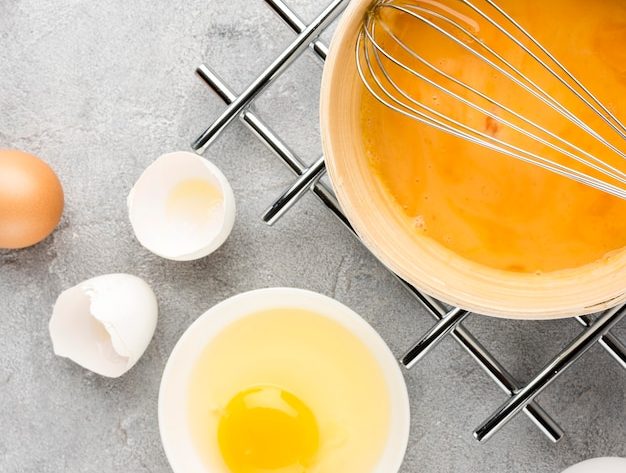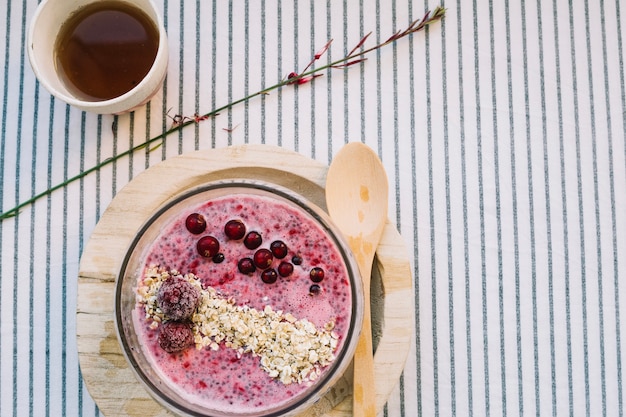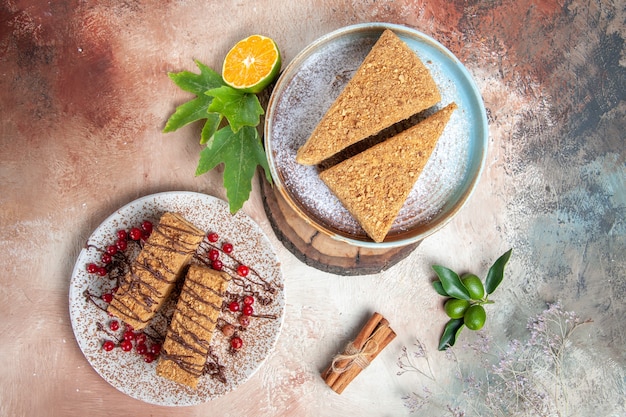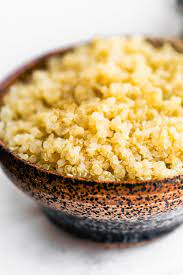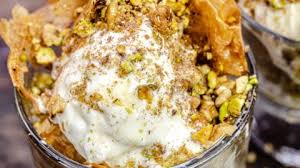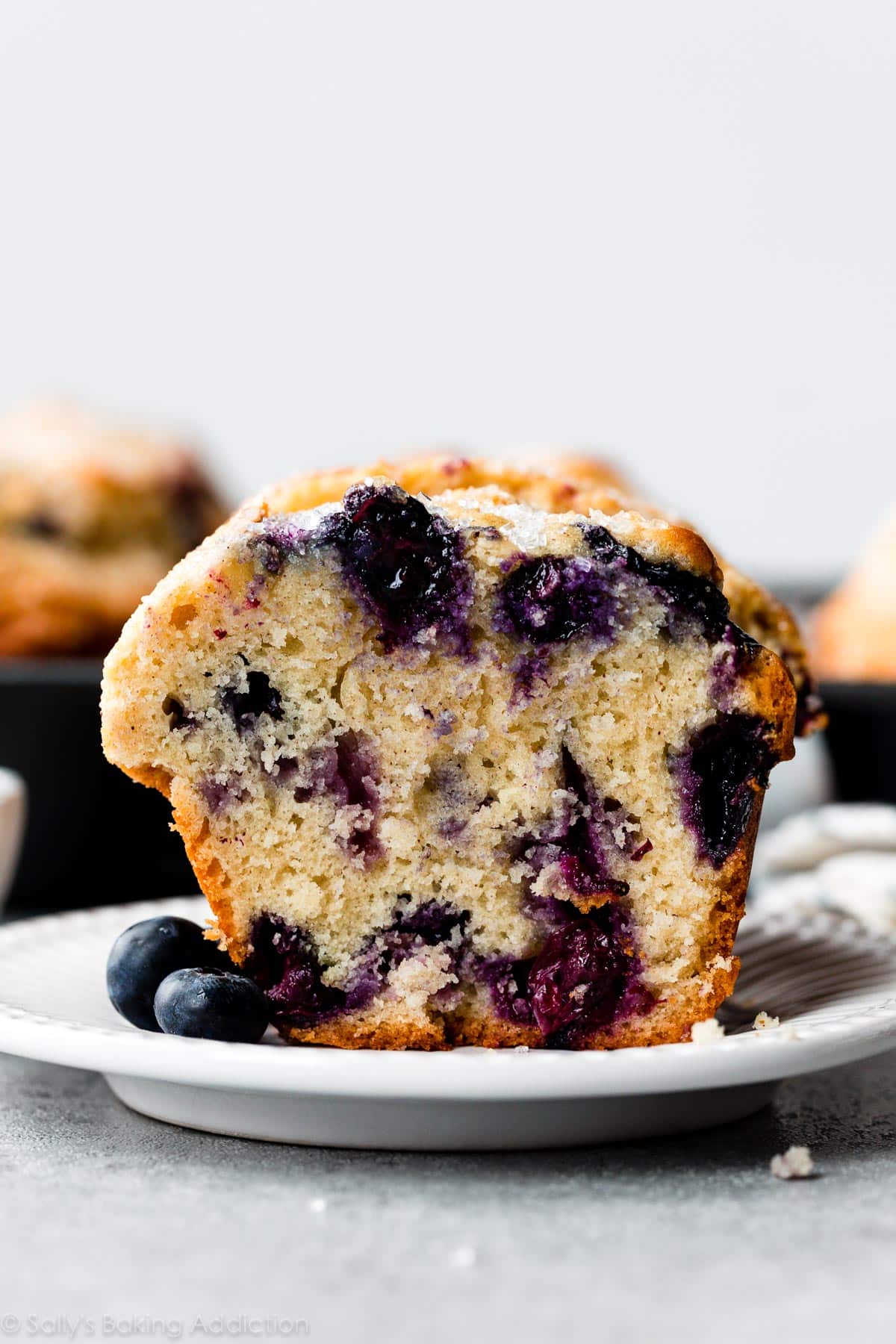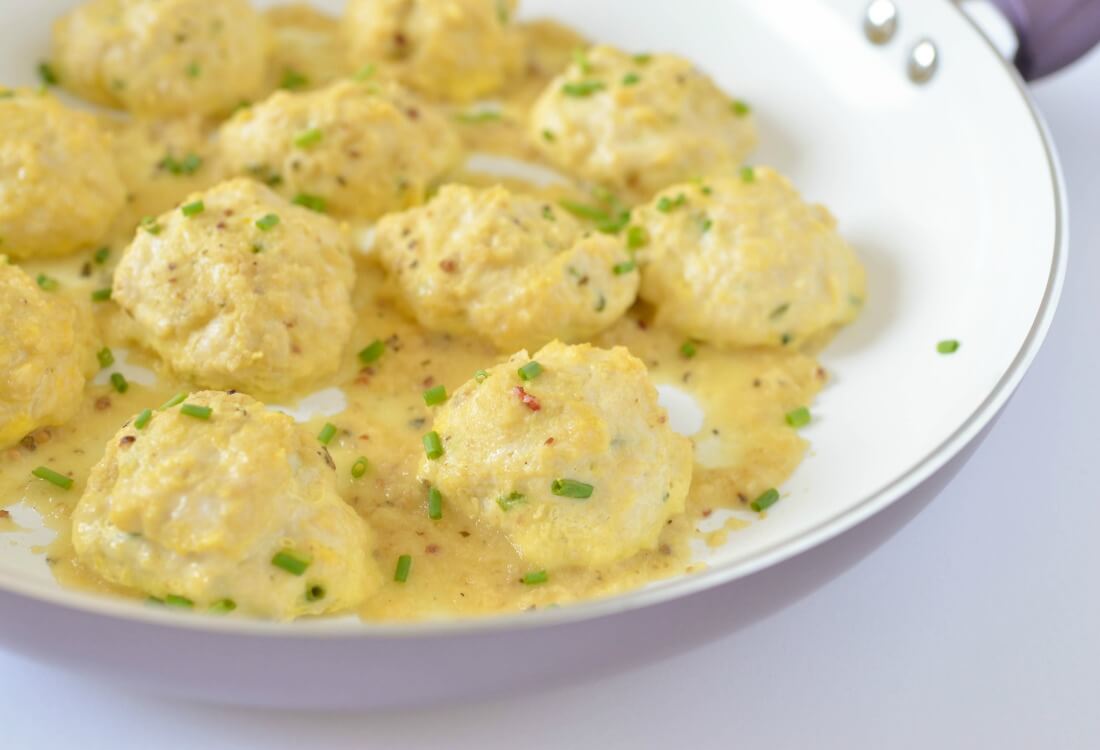Best Egg Substitutes for Baking Delicious Treats
When it comes to creating delicious treats in the kitchen, understanding the diverse array of ingredients at your disposal can transform the process. Whether you’re looking to accommodate dietary restrictions or simply experiment with new flavors and textures, knowing how to replace a key component in your recipes can unlock a world of possibilities. This guide delves into various options that can seamlessly blend into your mixing bowl, enhancing both the taste and nutritional value of your creations.
The versatility of these options allows you to tailor your culinary endeavors, making them suitable for vegans, those with allergies, or anyone seeking to reduce their consumption of animal products. With a bit of creativity and insight, you can achieve the same delightful results in your pastries, breads, and confections, without sacrificing quality or flavor.
Explore the myriad of choices available to you, from pureed fruits to dairy-based alternatives, and discover how each can influence the final outcome of your delightful masterpieces. With the right guidance, you can elevate your kitchen skills, impressing friends and family with your newfound knowledge and delectable dishes.
Understanding the Role of Eggs in Baking
In the world of culinary arts, certain ingredients play multifaceted roles in the creation of delicious treats. One such ingredient has a significant impact on texture, flavor, and structure. Its contributions are vital, influencing everything from rise and binding to moisture retention.
To appreciate its function, it’s important to recognize the various ways it enhances pastries and confections:
- Binding Agent: Helps to hold ingredients together, ensuring that the final product maintains its shape.
- Leavening: Adds volume and lightness through the incorporation of air during mixing, which expands during baking.
- Moisture: Provides necessary hydration, contributing to a tender crumb and preventing dryness.
- Flavor Enhancer: Adds richness and depth, improving the overall taste profile of baked goods.
- Color Development: Promotes browning, resulting in an appealing appearance through the Maillard reaction.
Understanding these aspects can aid in making informed choices when seeking alternatives, allowing for creativity and adaptability in your culinary endeavors.
Top Plant-Based Alternatives for Eggs
In the realm of culinary creativity, there exists a rich array of plant-derived ingredients that serve as wonderful replacements in various recipes. These alternatives not only accommodate dietary needs but also bring unique flavors and textures to the final dish. Exploring these options can enhance your baking experience while aligning it with plant-based preferences.
Common Plant-Based Replacements
When seeking to replace traditional ingredients, certain plant-based components stand out due to their binding and leavening properties. Here are some popular choices:
| Plant-Based Ingredient | Measurement Equivalent | Best For |
|---|---|---|
| Flaxseed Meal | 1 tablespoon ground flaxseed + 2.5 tablespoons water | Pancakes, muffins, cookies |
| Chia Seeds | 1 tablespoon chia seeds + 3 tablespoons water | Brownies, breads, smoothies |
| Applesauce | 1/4 cup unsweetened applesauce | Cakes, muffins, quick breads |
| Silken Tofu | 1/4 cup blended silken tofu | Cakes, brownies, frittatas |
| Nut Butters | 3 tablespoons nut butter | Cookies, bars, energy bites |
Benefits of Plant-Based Choices
Utilizing these plant-derived components offers not just dietary flexibility but also contributes to a more sustainable culinary practice. They often come packed with nutrients, providing additional health benefits while allowing for delightful experimentation in the kitchen.
Dairy Options for Baking and Cooking Without Eggs
When looking to create delightful baked goods without using traditional sources, dairy products can play a crucial role. They provide moisture, richness, and texture that mimic the qualities eggs typically contribute. Understanding how to incorporate different dairy items can help you achieve a successful outcome in your recipes.
Popular Dairy Ingredients
Here are some commonly used dairy options that can enhance your recipes while serving as a binding or leavening agent:
| Dairy Product | Function | Measurement |
|---|---|---|
| Yogurt | Adds moisture and richness | 1/4 cup per egg |
| Buttermilk | Provides a tangy flavor and lightness | 1/4 cup + 1/2 tsp baking soda per egg |
| Milk | Offers moisture and helps with binding | 1/4 cup per egg |
| Sour Cream | Contributes density and creaminess | 1/4 cup per egg |
Choosing the Right Product
Selecting the appropriate dairy ingredient can depend on the desired flavor and texture of your final product. Experimenting with various options can help identify which pairs best with your specific recipe, ensuring that you achieve a delectably satisfying result.
Unique Vegan Substitutes to Try
Exploring alternatives to traditional animal-derived ingredients opens up a world of creativity in the kitchen. These innovative options not only cater to plant-based diets but also enhance flavors and textures in your culinary creations. From natural elements to unexpected combinations, here are some exciting choices to elevate your recipes.
One popular option is using mashed bananas, which add sweetness and moisture while providing a creamy consistency. As a favorite for those seeking a fruity twist, ripe bananas can enhance baked goods like muffins and cakes.
Another intriguing choice is aquafaba, the liquid from canned chickpeas. This versatile ingredient whips up into a frothy texture, making it perfect for creating meringues, mousses, and even light cakes.
Ground flaxseeds or chia seeds mixed with water create a gel-like substance, serving as a binding agent while offering a boost of nutrition. This natural powerhouse works wonderfully in cookies and bars, making them chewy and satisfying.
Silken tofu is a fantastic addition as well, especially in brownies and dense desserts. Its creamy nature integrates seamlessly into batters, contributing a rich flavor without overpowering other ingredients.
For a unique flair, try utilizing pumpkin puree or applesauce to impart moisture and a hint of sweetness in your treats. These options are particularly delightful in fall-inspired recipes, providing a warm, comforting taste.
Each of these alternatives not only fulfills the purpose of traditional ingredients but also invites experimentation in your kitchen. Embrace these choices to unlock new potential and delight your taste buds with innovative snacks and desserts.
How to Adjust Recipes for Substitutes
Modifying your culinary creations can be a rewarding experience, especially when you want to adapt them to different ingredients. Understanding how to make these changes is key to maintaining the desired texture and flavor of your dishes. With a few simple techniques, you can successfully incorporate alternative ingredients without compromising quality.
Understanding Proportions and Measurements
Precision is crucial when dealing with replacements. Each alternative has its unique properties, affecting moisture content, binding ability, and overall structure. For instance, if you’re swapping a liquid component, you may need to adjust the flour quantity to compensate for the added moisture. Always start with the recommended ratio, and make incremental adjustments based on the batter or dough consistency.
Flavor and Texture Considerations
When introducing new elements into your recipes, consider how they will influence taste and texture. Some options may impart a distinct flavor or change the mouthfeel of your dish. It’s wise to experiment in small batches to identify how different combinations work together. Don’t hesitate to add spices or sweeteners to enhance the flavor profile when making changes.
Experimentation is the heart of culinary artistry. Be open to trying different variations until you find the right balance, ensuring that your creations remain delicious and enjoyable.
Common Mistakes When Substituting Eggs
When trying to replace a crucial ingredient in recipes, many individuals may encounter pitfalls that can impact the final outcome. Understanding these common oversights can lead to improved results and a more satisfying culinary experience.
Ignoring Texture and Moisture Needs
A frequent error is failing to consider the texture and moisture requirements of the dish. Each alternative brings its own characteristics; for example, using too much of a liquid-based option can lead to overly wet batter or dough. It’s vital to adjust other liquids in the recipe accordingly to maintain the desired consistency.
Neglecting Flavor Profile
Another mistake involves disregarding how the chosen alternative can affect the overall flavor of the creation. Some replacements have distinct tastes that may not pair well with other ingredients. Always take into account the flavor profile and choose an alternative that complements the other elements in the recipe.
Q&A: Egg substitute for baking
What are some common egg substitutes for baking, and how do they affect the taste and texture of baked goods?
Common egg substitutes include applesauce, mashed bananas, yogurt, silken tofu, and flaxseed meal. Each of these alternatives can impart different flavors and textures to your baked goods. For instance, applesauce and mashed bananas add moisture and sweetness, making them excellent for cakes and muffins. Yogurt can create a denser texture while also adding a slight tang. Silken tofu is great for dense baked items like brownies due to its creamy consistency, while flaxseed meal is a popular choice for cookies and pancakes as it can add a nutty flavor and binding properties similar to eggs. Remember, the choice of substitute may vary depending on the specific recipe and desired outcome.
How do I use flaxseed meal as an egg substitute in baking?
To use flaxseed meal as an egg substitute, mix one tablespoon of ground flaxseed with three tablespoons of water. Stir the mixture well and let it sit for about 5 to 10 minutes until it becomes gelatinous and thickens. This mixture mimics the binding properties of eggs, making it an excellent choice for cookies, pancakes, and breads. Keep in mind that the flavor of flaxseed is mild, so it usually won’t significantly alter the taste of your baked goods, but it may give a slight nuttiness to the final product.
Are there any egg substitutes that can provide similar fluffiness to baked goods as eggs do?
Yes, there are several egg substitutes that can help achieve a fluffy texture in baked goods. Aquafaba, which is the liquid from canned chickpeas, is a fantastic option. You can use three tablespoons of aquafaba to replace one egg. When whipped, aquafaba can create aeration, similar to that of egg whites, making it ideal for meringues and sponge cakes. Additionally, baking powder combined with vinegar can also help create a lighter texture. For every egg, you can use one teaspoon of baking powder mixed with one tablespoon of vinegar, which will provide some leavening to your baked goods.
Can I use yogurt as an egg substitute in any baking recipe?
Yogurt can be a versatile egg substitute, but it works best in moist recipes such as cakes, muffins, and quick breads. To replace one egg, use a quarter cup of plain yogurt, which will add moisture and a slight tangy flavor to your baked goods. However, it’s important to note that yogurt may not be suitable for all recipes, particularly those that rely heavily on egg structure, such as soufflés or angel food cakes. Always consider the desired outcome of the recipe when choosing yogurt as a substitute, and make adjustments to other liquids in the recipe accordingly to maintain the right texture.
Are there any vegan options for egg replacements that can be used in baking?
Absolutely! There are several vegan options available for egg replacements in baking. Some popular choices include: 1) Applesauce — one-quarter cup can replace one egg, adding moisture and sweetness. 2) Mashed bananas — similar to applesauce, one-quarter cup can replace one egg and provides a distinct banana flavor. 3) Chia seeds — mixing one tablespoon of chia seeds with three tablespoons of water creates a gel-like consistency that works well for binding in recipes. 4) Silken tofu — blending one-quarter cup of silken tofu can provide structure and creaminess, perfect for brownies and dense cakes. These substitutes are all effective and help maintain the integrity of vegan baking by avoiding animal products.
What are the best egg substitutes for baking if I’m allergic to eggs?
For those with egg allergies, there are several effective substitutes that can be used in baking. Common options include applesauce, which adds moisture and a bit of sweetness—typically, a quarter cup of applesauce can replace one egg. Another great alternative is flaxseed meal; mix one tablespoon of flaxseed meal with two and a half tablespoons of water and let it sit for a few minutes until it thickens, which can substitute one egg. For a lighter texture, you can also use silken tofu blended until smooth, with about a quarter cup substituting one egg. Each of these alternatives not only helps bind ingredients but also contributes unique flavors that can enhance your baked goods, making them delicious even without eggs.
Can I use yogurt as an egg substitute in baking, and if so, how much should I use?
Yes, yogurt can be an excellent egg substitute in baking, providing moisture and richness. You can use plain yogurt, whether it’s regular or Greek, as a direct substitute for eggs. Generally, about a quarter cup of yogurt can replace one egg in most recipes. This works particularly well in cakes, muffins, and some quick breads, helping to keep them moist. However, keep in mind that using yogurt might slightly alter the flavor and texture of the final product, making it denser. It’s advised to experiment a little, especially in recipes where the egg’s role is crucial, like soufflés or meringues, where you might want to consider other lighter alternatives instead. Overall, yogurt is a versatile option for those looking to avoid eggs while still achieving delicious baked results.
What is a good substitute for 1 egg in baking if you run out of eggs?
A good substitute for 1 egg in baking is a flax egg. To make a flax egg, mix 1 tablespoon of ground flax seed with 3 tablespoons of water and let it sit until it becomes gel-like.
How can you use arrowroot powder as an egg replacer?
To use arrowroot powder as an egg replacer, combine 2 tablespoons of arrowroot powder with 3 tablespoons of water. This mixture acts as a thickening agent in recipes that call for eggs.
What can be used instead of eggs in recipes like chocolate chip cookies?
Instead of eggs in chocolate chip cookies, you can use a combination of 1 tablespoon of ground flax seed mixed with 3 tablespoons of water. This flax egg provides a binding and moisture similar to eggs.
How can vinegar and baking soda be used as an egg replacement in baking?
To replace 1 egg in baking, mix 1 teaspoon of baking soda with 1 tablespoon of vinegar. This combination helps to create a leavening effect similar to the role of eggs in recipes.
What is a commercial egg replacement product, and when should it be used?
A commercial egg replacement product is designed to mimic the properties of eggs in baking and cooking. It is best to use these products when you need a reliable substitute that provides similar texture and binding.
What is the best egg substitute for baking cakes and cookies?
For baking cakes and cookies, using 1 tablespoon of ground flax seed mixed with 3 tablespoons of water or 2 tablespoons of arrowroot powder combined with 3 tablespoons of water can be effective substitutes for eggs.
How can you use plain yogurt or buttermilk as an egg replacer?
To use plain yogurt or buttermilk as an egg replacer, substitute ¼ cup of yogurt or buttermilk for each egg in the recipe. This provides moisture and helps with binding.
What is the ratio of ground flax seed to water when making a flax egg?
The ratio for making a flax egg is 1 tablespoon of ground flax seed mixed with 3 tablespoons of water. Allow the mixture to sit until it becomes thick and gel-like.
How can chia seeds be used as an egg substitute in recipes?
To use chia seeds as an egg substitute, mix 1 tablespoon of chia seeds with 3 tablespoons of water. Let the mixture sit until it forms a gel-like consistency, similar to a flax egg.
What can be used as a replacement for eggs in recipes like brownies or quick breads?
For brownies or quick breads, you can use a flax egg or chia seed gel. To make a flax egg, combine 1 tablespoon of ground flax seed with 3 tablespoons of water. For chia seeds, mix 1 tablespoon of chia seeds with 3 tablespoons of water.
What can be used as an egg substitution in recipes that call for a large egg?
A good egg substitution for recipes that call for a large egg is a flax egg. To make it, mix 1 tablespoon of ground flaxseed with 3 tablespoons of water and let it sit until it thickens.
How can you use starch as a replacement for eggs in baking?
To use starch as a replacement for eggs in baking, combine 2 tablespoons of starch (such as cornstarch or arrowroot powder) with 3 tablespoons of water. This mixture helps bind ingredients together.
What is a suitable egg substitute if you prefer a commercial egg replacer?
If you prefer a commercial egg replacer, look for products designed specifically for baking. These commercial egg replacers often provide similar binding and leavening properties as whole eggs.
How can you use vegetable oil as an egg replacement in baking?
To use vegetable oil as an egg replacement, combine ¼ cup of vegetable oil with 1 teaspoon of baking powder. This mixture can mimic the moisture and leavening effects of eggs in recipes.
What is the best egg substitute for cooking and baking that doesn’t involve using eggs?
For cooking and baking without using eggs, you can use a flax egg or a mixture of ¼ cup of applesauce. Both provide moisture and binding, making them excellent substitutes.
What can be used to replace each egg in recipes that require egg yolks?
To replace each egg yolk in recipes, you can use ¼ cup of plain yogurt or buttermilk. These ingredients provide similar moisture and richness to egg yolks.
How can you make a DIY egg substitute for recipes that require binding and leavening?
A DIY egg substitute for binding and leavening can be made by mixing 1 tablespoon of ground flaxseed with 3 tablespoons of water. This mixture works well in recipes that need binding.
What is a good substitute in recipes like cookies where eggs provide structure?
In recipes like cookies where eggs provide structure, a combination of 1 tablespoon of ground flaxseed mixed with 3 tablespoons of water or ¼ cup of mashed bananas can be a good substitute.
What is the recommended amount of baking powder to use as part of an egg substitute?
When using baking powder as part of an egg substitute, add 1 teaspoon of baking powder to your recipe. Combine this with other liquid ingredients to mimic the leavening effect of eggs.
How can baking with bananas be used as an egg substitute?
Baking with bananas involves using ¼ cup of mashed bananas to replace each egg. This provides moisture and some binding, making it suitable for recipes like quick breads and muffins.
